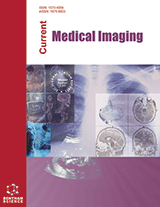
Abstract
Background: Cardiac chamber dimensions and left ventricle (LV) wall thickness change with the cardiac cycle, in which researchers have set different time points for systole and diastole.
Objective: This study aimed to provide characteristics of normal heart and choose the correct cardiac cycle to measure maximum cardiac parameters for cardiovascular disease.
Methods: The parameters of left atrium (LA), LV, right atrium (RA), and right ventricle (RV), as well as the wall thickness of LV, were measured in different cardiac phases using cardiac computed tomography (CT). Then, their differences in different phases and the correlation between these parameters and traditional risk factors were analyzed. In addition, receiver operator characteristic curve (ROC) analyses was performed to estimate LA enlargement.
Results: The dimensions of LA and RA as well as the wall thickness of LV reached the maximum at the phase of 35% – 45%, while the dimensions of LV and RV reached the maximum at 95% – 5%. However, the changes of LA-B (antero-posterior diameter), LV-D1 (basal dimension), RA-B (minor dimension), and RV-D2 (mid cavity dimension) were relatively more stable than other diameters during the cardiac cycle. The maximum LA-B diameter, LV-D1 diameter, RA-B diameter, and RV-D2 diameter as well as the maximum interventricular septum thickness were acquired. Heart rate (HR) and smoking were potential indicators of LV-D2 (mid cavity dimension), while HR and LV myocardial mass were potential indicators of LV-D3 (apical-basal dimension). In phase 45%, the cut-off value of LA-B was 37.12 mm, with high sensitivity for predicting LA enlargement.
Conclusion: Choosing the adaptive cardiac phase for evaluating cardiac chamber dimensions and wall thickness obtained by cardiac CT could provide a more accurate clinical measurement of the heart.
Keywords: Chamber dimension, Wall thickness, Cardiac phase, Cardiac computed tomography, Heart disease, Blood.











